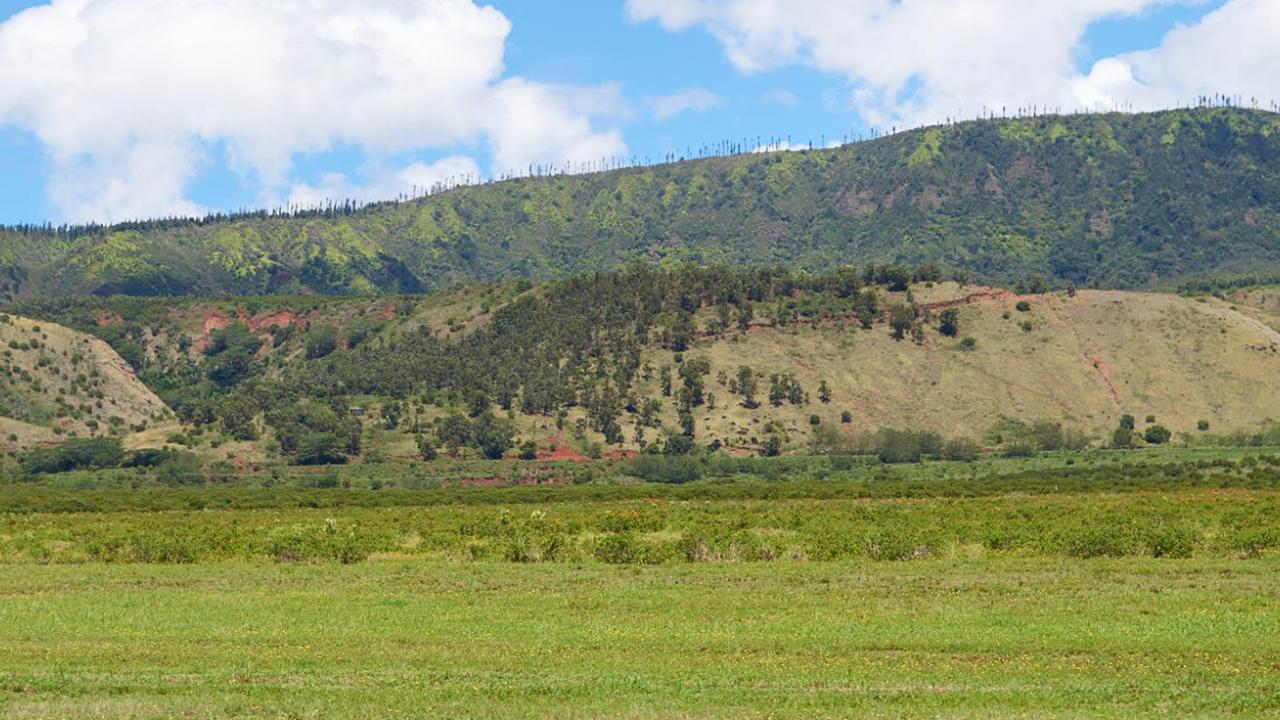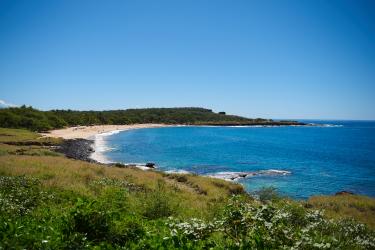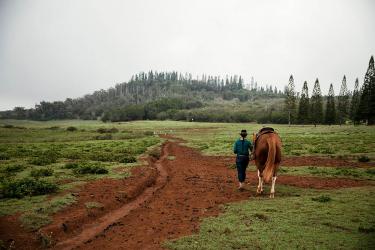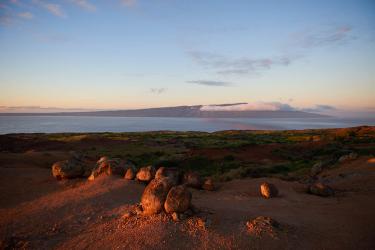Please keep the following tips in mind as you consider writing about and visiting Lānaʻi, one of the most special places on the planet. Mahalo for doing your part to responsibly promote and protect the Hawaiian Islands.
How We Work with Media
The Maui Visitors and Convention Bureau (MVCB) works with U.S.-based media to tell the unique stories about Lānaʻi, its culture and the people who call the island home. Our public relations team can assist with fact checking, story ideas, recommendations, images and more. We also consider media support for qualified journalists or broadcast productions, and the level of support is based on our resources, type of content and outlet, time of year and budget. To be considered for a sponsored media visit, please complete our Travel Assistance Questionnaire and keep the following important factors in mind:
- Due to the volume of requests, we request at least six (6) weeks notice for sponsored media visits. In working with members, and industry partners, MVCB requires adequate time for evaluation and coordination of all travel logistics.
- All media receiving travel assistance to Lānaʻi from MVCB are required to complete a Waiver and Release Form.
- MVCB only provides travel assistance for qualified media on assignment. If you are traveling with a writing partner or photographer, he/she must complete a separate form to be considered for assistance.
- We do not provide attractions passes for media.
Sensitive Destinations and Activities
There are areas and activities that the Maui Visitors and Convention Bureau does not promote, and does not support editorial, video, photographic and social media coverage due to safety, trespass and other reasons. Please reference island specific pages as a reference guide for areas and activities NOT to include in your promotion of Lānaʻi in any medium.
- Keahiakawelo – This is a sensitive Hawaiian cultural site. Standing or sitting on the rock formations, and moving and stacking of rocks is forbidden.
- Kānepuʻu Preserve – The preserve is part of a critical habitat conservation easement and protected by law. A short nature trail which introduces visitors to native dry forest plants is open to the public.
- Munro Trail – Access and possible dangerous trail conditions are not regularly maintained.
- Keōmoku Village – The village area has several sensitive Hawaiian cultural sites. This historic village is home to Ka Lanakila O Ka Mālamalama Church, and is the starting point for short trails leading to historic features associated with the Manalei Sugar Company operation (1898-1901).
- Kikoa Beach (Kahalepalaoa to Naha Region) – The access road along the windward shore of Lānaʻi requires a four-wheel drive vehicle and is often limited to local traffic due to muddy and/or poor conditions. Swimming and all other recreational water activities is dangerous due to offshore currents.
- Kaunolū Village and Bay – The village area is sacred cultural landscape and is site of a number of important Hawaiian cultural sites. Recreational water activities in the bay is dangerous.
- Mānele (Hulopoʻe Marine Life Conservation District) – The waters of Hulopoʻe, Pu‘upehe and Mānele Bays are protected and are a Marine Life Conservation District (MLCD). Certain restrictions have been enacted by law [HRS (13-30-2, 13-30-3)]. Various restrictions apply to access in the bays and on the shoreline. Traditional-style Hawaiian canoes and surfboards are allowed in the waters. No kayaks or motorized vehicles except in emergency situations are allowed. It is a federal crime to disturb, chase after, or otherwise interfere with naiʻa (dolphins) which frequent the bays. The endangered ‘ua‘u kani (Hawaiian wedge-tailed shear water) birds nest in the sand hills between the bays. It is important to remain on the designated trails to prevent impacts on nests which are dug into the sand dunes.
Travel Tips
- Please respect the land, people and communities.
- Comply with all signage. Do not go beyond warning signage or safe-distance barriers.
- Check ocean conditions (ē.g. high surf warnings) and weather conditions (ē.g. flash floods) before venturing out. Adhere to lifeguard warnings and issuances.
- Note that taking rocks, sand and other natural materials is prohibited by law.
- Wear reef safe sunscreen. Hawaiʻi now bans the sale of sunscreen containing the coral-harmful chemicals oxybenzone and octinoxate.
- Keep your distance from Hawaiʻi marine animals including, but not limited to, monk seals, turtles and dolphins.
- Please do not embark on “off the beaten path” experiences if you are unsure of trespassing, safety and/or cultural restrictions.
Other Considerations
- A person may be from Hawaiʻi, but should not be referred to as “Hawaiian” unless they are of Native Hawaiian descent. Instead of “Hawaiian officials” or “Hawaiian residents” please say “Hawaiʻi officials” or “local residents.”
- For cuisine, it’s typically safe to say “Hawaiʻi cuisine/dish” over “Hawaiian cuisine/dish” since there may be some slight altering to recipes that may make the dish not “Hawaiian.
- HVCB and its Island Chapters recognize the use of the ‘ʻokina [ ‘ ] or glottal stop, one of the eight consonants of the modern Hawaiian language; and the kahakō [ā] or macron, a diacritical mark. However, we respect the individual use of the ‘ʻokina and kahakō for names of organizations and businesses. Certain non-English characters don’t always appear correctly on various web browsers, so we recommend omitting them for online content.
View and download the Ma‘ema‘e toolkit here.
Photography
When selecting images, choose photos that capture an authentic moment. Please keep the following in mind as you’re searching for visual assets to complement your story:
- Images must reflect the correct island (do not use a Kauaʻi image for a Lānaʻi story).
- Images must be shot in Hawaiʻi.
- Images should not be flipped, skewed or otherwise altered in a way that renders them visually inaccurate.
- Natural beauty is one of The Hawaiian Islands’ brand pillars, so images should not be over-edited or colorized.
- The use of drones is prohibited. Any exceptions must first be approved by the Federal Aviation Agency.






